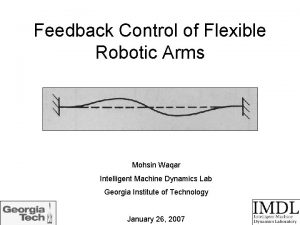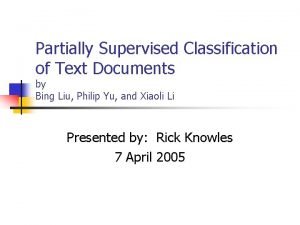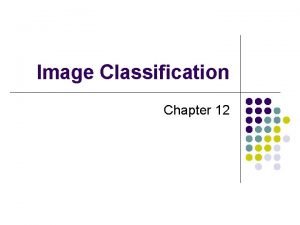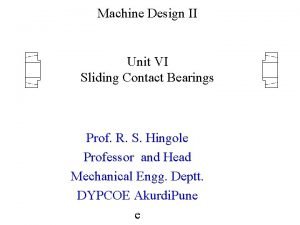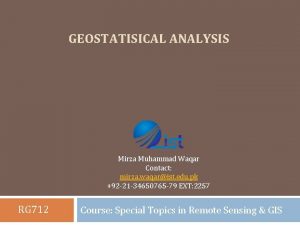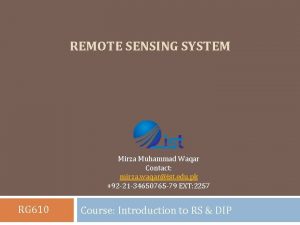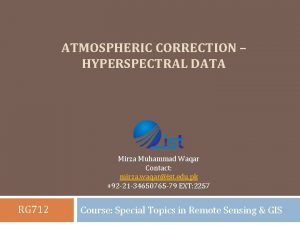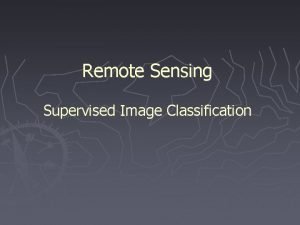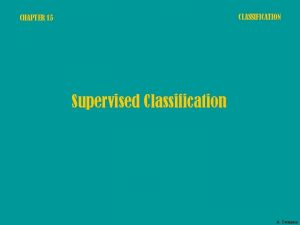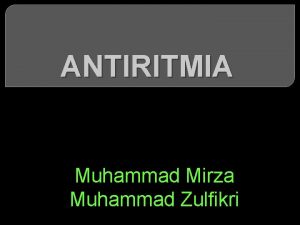SUPERVISED CLASSIFICATION Mirza Muhammad Waqar Contact mirza waqarist

















- Slides: 17

SUPERVISED CLASSIFICATION Mirza Muhammad Waqar Contact: mirza. waqar@ist. edu. pk +92 -21 -34650765 -79 EXT: 2257 RG 610 Course: Introduction to RS & DIP

Contents 2 Hard vs Soft Classification Supervised Classification � Training Stage Field Truthing Inter class vs Intra Class Variability � Classification Stage Minimum Distance to Mean Classifier Parallelepiped Classifier Maximum Likelihood Classifier � Output Stage Supervised vs Unsupervised Classification

Hard vs Soft Classification Hard Classification � In hard classification, we can assign mixed pixels are pure pixels. It means we create an additive error in our pure class. • Soft Classification In soft classification, for mix pixels, we identify the dominance and co-dominance factors in pixel. Through this analysis we can identify at the most three classes in one pixel. Though this analysis we can’t identify a class that is contributing less than 20% in the pixel.

Supervised Classification Such Classification, in which human interruption involve. Totally human decision dependent. Analyst define training sites, and on the base of these training sites, clusters formed.

Supervised Classification There are three phase in supervised classification. � Training stage � Classification stage � Output stage

Training Stage Clear objective of classification Experiment on the image for understanding different land covers exit in the image. Identify the major variations in the image (hot spots). Any spectral variation that is new for analyst. Create multiple false color composites of ground truthing area. Ground truthing for hot spots identification.

Field Truthing Alternate for not accessible hot spots � Historical data � Local person’s knowledge � High resolution imagery

Inter-Class Variability vs Intra-Class Variability Inter-Class Variability � It means variability among different classes in satellite image. � Separating different land cover classes in satellite image. � Accuracy of classification is dependent on interclass variability/separability.

Inter Class Variability

Intra-Class Variability Within class variability. Used to map sub types of land covers, e. g. forest, bare soil, rocks etc. Feature space is a useful tool for within-class variability but the prediction through feature space is totally dependent on spectral signature. An appropriate feature space should be choose for intra-class variability.

Classification Stage There are three classifier. � Minimum Distance to Mean Classifier � Parallelepiped Classifier � Maximum Likelihood Classifier

Minimum Distance to Mean Classifier

Parallelepiped Classifier

Maximum Likelihood Classifier

Output Stage In output stage, we define the level of classification. Create final classes. Accuracy Assessment Area estimation.

Supervised 16 Select Training fields Edit/evaluat e signatures Classify image Evaluate classification vs. Unsupervised Run clustering algorithm Identify classes Edit/evaluate signatures Evaluate classification

Questions & Discussion
 Ie
Ie Mohsin waqar
Mohsin waqar Saiama
Saiama Dr waqar malik
Dr waqar malik Sabah in arabic
Sabah in arabic Allahumma salli ala muhammad wa ala ali muhammad
Allahumma salli ala muhammad wa ala ali muhammad Interactive supervised classification
Interactive supervised classification Partially supervised classification of text documents
Partially supervised classification of text documents Supervised classification
Supervised classification Supervised classification
Supervised classification Pendekatan unsupervised learning adalah
Pendekatan unsupervised learning adalah Examples of non contact force
Examples of non contact force Disadvantages of sliding contact bearing
Disadvantages of sliding contact bearing What is non contact force
What is non contact force Contact vs field forces
Contact vs field forces Atopic dermatitis vs contact dermatitis
Atopic dermatitis vs contact dermatitis Whats a noncontact force
Whats a noncontact force Shottky contact
Shottky contact

